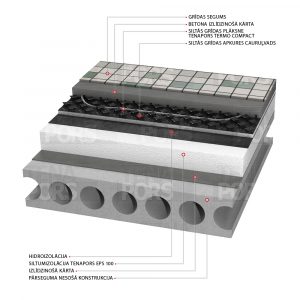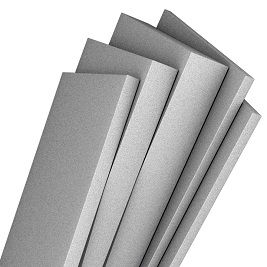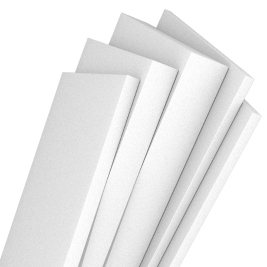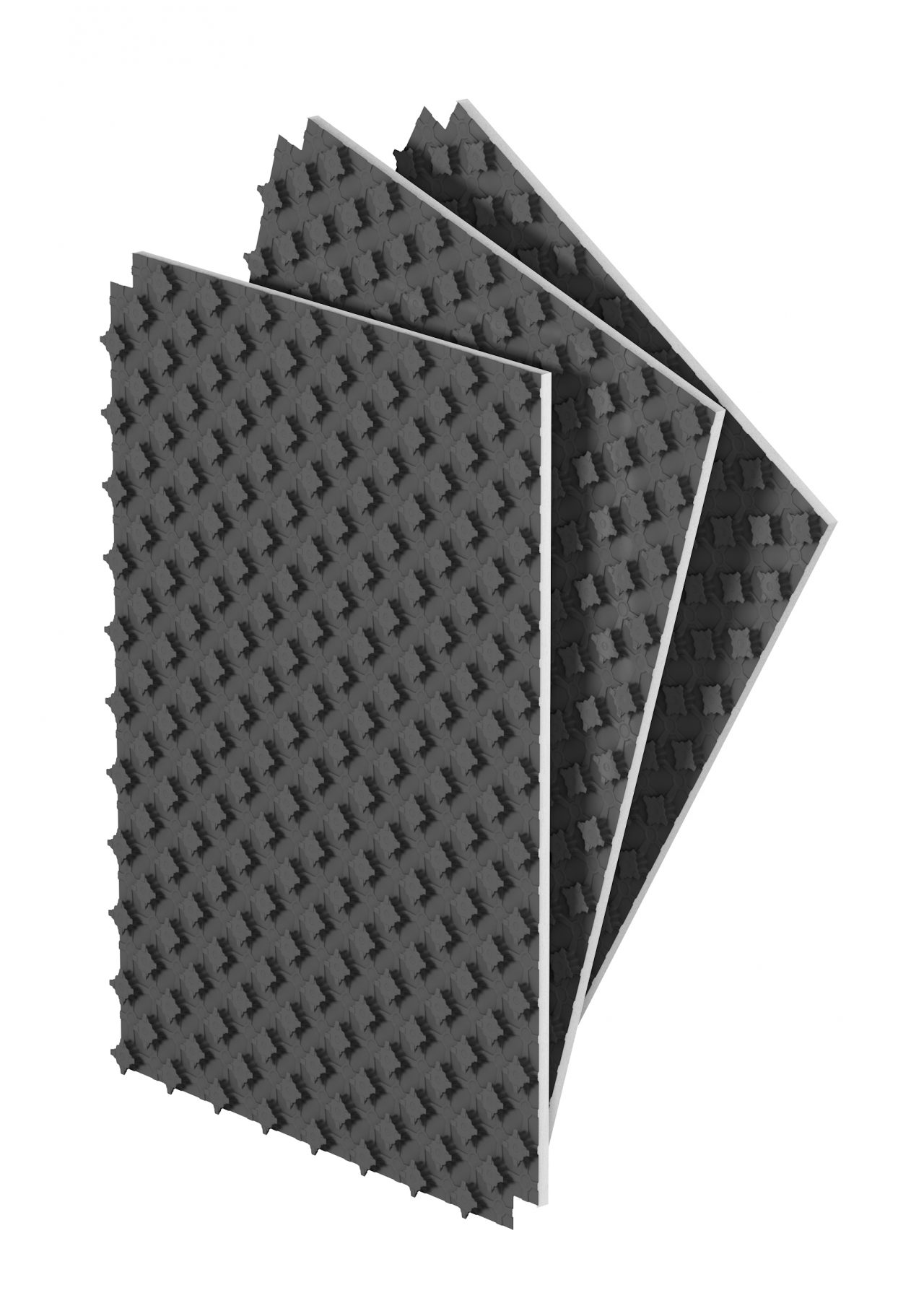Floors above basement which is not thermally insulated
Solutions
The following solutions can be used in places with a basement or attic which is not thermally insulated. Depending on the situation, there are two technologies available for affixing heating materials. The material can be placed above the load-bearing structure or below it. Creating insulation below the structure, the layer should be covered with a fire-safe material to meet the requirements of fire safety; therefore, at least 10mm thick plaster or plasterboard should be used.
Thermal insulation under the cover
To thermally insulate intermediate floor structures from below, one can use polystyrene foam with low load tolerance because in such placement the material is not subjected to a mechanical load. Before mounting works can begin, one must prepare the surface. If it is intended to mount the thermal insulation layer onto a load-bearing reinforced concrete structure, it can be fixed by the use of polystyrene foam; for additional load tolerance it is advised to design additional mechanical fixings. Under polystyrene foam it is advised to construct steam insulation to prevent migration of water steam in the load-bearing structures. To meet the requirements of fire safety, it is necessary to cover the thermal insulation layer with a fire-safe material.
Thermal insulation above the cover
Bearing in mind a system construction and use, it is necessary to assess the thermal insulation material and effects on it. If a floor is thermally insulated above a basement with no heating, there should be a levelling concrete layer above the material; during the service time, the material could be exposed to significant mechanical loads and therefore one must chose polystyrene foam with elevated load tolerance (at least EPS 80). In cases when you thermally insulate a cover between a residential premise and attic with no thermal insulation, you can chose a material with lower load tolerance because the material will not be exposed to such a high mechanical stress. However, to prevent the flow of warm air through load-bearing structures in an upward faced direction, it is necessary to include a steam insulation layer. If the designed thermal insulation layer is not thicker than 100mm, it should be mounted in several layers, to avoid overlapping seams and creating cold bridges.





